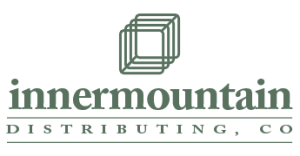Every business leader I know, especially in digital marketing, is asking the same question right now: “How do my competitors keep beating me to market opportunities?” To gain insight into this challenge,
The answer isn’t what most expect, and it can provide insights that are crucial to understanding market dynamics. It’s not that your competitors are smarter or work harder. The real difference? They’re using advanced competitive analysis tools and competitor benchmarking tools you haven’t discovered yet, especially when applied through digital channels.
In 2025, market research and competitor analysis aren’t optional—it’s survival. A recent study by McKinsey found that companies using sophisticated competitive intelligence tools outperform their peers by 27% in revenue growth. Think about that gap compounding over the years.
Here’s what’s happening behind the scenes: Your competitors have moved beyond simple SWOT analyses and quarterly reviews. They’re implementing real-time benchmarking systems and competitor benchmarking tools that utilize historical data to alert them to market shifts the moment they occur.
What if you could see exactly how your competition operates—their pricing strategies, marketing tactics, customer service approaches—and identify opportunities without the guesswork? What decisions would you make differently?
The competitor benchmarking tools available today make this possible, but choosing the right one is critical. Pick wrong, and you’ll waste resources without gaining valuable insights or actionable insights, requiring more manual effort to correct the issue. Pick right, and you’ll spot opportunities your competitors miss.
This guide cuts through the noise to show you exactly how to select and implement the right competitor benchmarking tool for your specific business strategy in 2025. The competitive edge in your digital performance you’ve been searching for is waiting in these pages.

Metrobi drivers are rated 4.97 out of 5
Trusted by local businesses for:
- Background-checked professionals
- Specialized in business deliveries
- Same drivers for consistency
- 4.97/5 average delivery rating
How to Choose the Best Competitor Analysis Tool and Software Features
Pick analysis tools that match your specific business goals and budget
Look for user-friendly interfaces with strong data visualization capabilities
Ensure software integrates with your existing systems and maintains data privacy
Selecting the right competitor analysis software requires understanding what performance metrics and features, particularly in lead generation, will truly benefit your business strategy. The market offers numerous options in 2025, each with different strengths. Your choice should be guided by your specific business requirements, including audience demographics, rather than simply following market trends.
Understand Your Business Needs for Competitive Benchmarking
Before exploring the various competitor analysis tools available, you need to clearly define what you want to achieve with these tools. Start by identifying specific goals that will guide your selection process. Are you primarily focused on tracking market share changes and engagement metrics? Do you need to monitor competitors’ pricing strategies? Or perhaps you need to analyze their social media performance?
Write down 3-5 primary objectives for your competitor analysis efforts. This simple step helps narrow down your competitive position and the selection process immediately, enabling you to make more informed decisions. According to research by Gartner, companies that align their software choices with clearly defined strategic goals achieve 37% better ROI on their technology investments than those who select tools without specific objectives.
Next, examine how these tools will fit into your existing business strategy. For example, if your strategy involves rapid market expansion or email marketing, you’ll need tools that excel at identifying market gaps and emerging competitors. Alternatively, if your focus is on price optimization, look for software with strong pricing analysis features and historical tracking capabilities.
“Believing that your competition is stronger and better than you pushes you to better yourself.” — Simon Sinek
Matching Features to Strategic Goals
Create a feature priority matrix by listing your strategic goals in one column and potential software features in another. Score each feature based on how well it supports each goal. This approach helps identify consumer demand and which features are truly essential versus those that might be interesting but don’t directly support your strategy.
Consider your budget constraints and team capabilities when evaluating features. The most expensive tool isn’t always the best fit for your company. Small to mid-sized businesses often benefit from focused tools, including social media monitoring, that address specific needs rather than comprehensive platforms with features they’ll never use.
Survey your team members who will use the software. Their input about what features would help them perform better can be valuable. According to a 2024 study by McKinsey, tools selected with end-user input, especially for influencer campaigns, have 41% higher adoption rates than those chosen solely by leadership.
Evaluate User-Friendly Interfaces
User interface quality significantly impacts how effectively your team will use the competitor analysis software. Even the most powerful competitor benchmarking tool that tracks engagement rates becomes useless if your team finds it too difficult to navigate or understand.
Look for intuitive navigation that allows users to find the information they need quickly. The best interfaces for keyword research use logical groupings, clear labeling, and consistent design patterns. During demos or free trials, have multiple team members test the interface to ensure it makes sense to different types of users.
Data visualization capabilities are particularly important for competitor analysis tools. Your team needs to quickly grasp trends, patterns, and outliers in the data. Check if the software offers customizable dashboards that can be tailored to different roles within your organization. Marketing teams might need different views from product development teams.
Testing the Interface Effectiveness of the Competitive Analysis Tool
When evaluating interfaces, create a simple test scenario based on your most common analysis needs, including the ability to set up real-time alerts. Time how long it takes to complete basic tasks like generating a competitor research report or tracking a specific metric over time using historical data. Software that requires excessive clicks or navigation through multiple screens will slow down your team’s workflow.
Customization options are another key factor. Every business has unique needs, and the ability to adjust the interface to match your workflow can significantly improve productivity. Look for options to:
Customize dashboard layouts and metrics displayed
Create saved views for frequently accessed information
Set up automated alerts for significant competitor changes
Adjust data visualization styles to match your team’s preferences
Finally, assess the availability and quality of training resources and customer support. Even the most intuitive software, including that for social media listening, has a learning curve. Good competitor analysis tools offer comprehensive documentation, video tutorials, and responsive customer support. Some vendors offer personalized onboarding sessions or dedicated account managers for enterprise clients.
Compare Key Features
Once you’ve established your business needs and evaluated user interfaces, it’s time to look deeper at specific features that drive effective competitor analysis.
Data visualization and reporting capabilities form the core of any good competitor analysis tool. Look for software that transforms complex data into clear, actionable insights, including those reflecting your keyword rankings. The best tools in 2025 offer interactive reports that allow users to drill down into specific data points, export findings in multiple formats, and schedule automated report delivery to stakeholders.
Check if the software can generate different types of visualizations that match your competitor analysis needs:
Market positioning maps to visualize your position relative to competitors
Trend graphs showing changes in key metrics over time
Comparison charts highlighting strengths and weaknesses
Heat maps identifying areas of competitive pressure
Integration Capabilities
Integration with your existing tech stack is crucial for maximizing the value of competitor analysis software. Isolated tools create data silos that limit your ability to connect competitive insights with other business information.
Verify that the software can integrate with:
Your CRM system to connect competitor information with sales data
Marketing automation platforms to inform campaign strategies
Business intelligence tools for deeper analysis
Project management software to turn insights into action items
Top competitor analysis tools in 2025 offer API access that allows custom integrations with your specific technology ecosystem. This flexibility becomes increasingly important as your analysis needs evolve.
Data security and privacy must not be overlooked. The best competitor analysis software includes robust security measures to protect both your data and the data you’re collecting about competitors, in line with industry standards . Review the vendor’s data security protocols, data handling policies, and compliance with regulations like GDPR or CCPA.
According to a 2025 survey by Forrester Research, 76% of businesses consider data security features “extremely important” when selecting competitor analysis tools—marking a 15% increase from 2023 figures. This reflects growing awareness about the risks associated with competitive intelligence gathering.
When comparing competitor analysis tools, remember that the “best” option varies based on company size, industry, and specific goals. Small businesses might benefit from tools like SEMrush or Ahrefs for SEO competitor analysis, while enterprise companies often need more comprehensive platforms like Crayon or Klue that cover multiple dimensions of competitive intelligence.
The four main aspects of competitor analysis you should ensure your chosen software can handle include:
Market analysis (industry trends, market share)
Product analysis (features, pricing, positioning)
Marketing analysis (channels, messaging, campaigns)
SWOT analysis (strengths, weaknesses, opportunities, threats)
Ultimately, the right competitor analysis software should feel like it was designed specifically for your business needs. It should simplify complex analysis tasks, deliver actionable insights, and integrate smoothly with your existing workflows. Take advantage of free trials and demos to thoroughly test potential options before making your final decision.
Selecting Business Strategy Improvement Tools That Drive Results
Find and track the right competitors to benchmark against
Collect meaningful data that supports strategic decisions
Transform insights into measurable business improvements
Effective competitor benchmarking gives businesses a realistic view of where they stand in the market regarding customer engagement. A 2025 Ernst & Young study found that companies using systematic benchmarking outperform their industry peers by 22% in revenue growth. Yet many businesses struggle with implementing an effective benchmarking process.
The core challenge is choosing tools that don’t just collect engagement metrics but drive actual results. According to Gartner’s 2025 Business Intelligence report, 68% of companies now use dedicated benchmarking tools, but only 31% report satisfaction with how these tools improve decision-making and help to uncover opportunities.
Let’s break down a practical framework for selecting and implementing tools that translate competitor insights into tangible business outcomes.
Step 1: Define Your Competitors
Effective benchmarking starts with identifying the right competitors to measure against. Many businesses make the mistake of focusing solely on direct competitors while overlooking indirect ones who might be solving the same customer problems differently.
The Harvard Business Review found that companies that benchmark against both direct and indirect competitors see 2.3x better strategic outcomes than those focused only on direct competition. Your benchmarking tools should help you cast a wide enough net while keeping your analysis focused.
You can start by categorizing competitors into tiers based on their relevance to your business model and target market. Primary competitors offer nearly identical products or services to the same customer base. Secondary competitors may target the same customers but with different solutions, while tertiary competitors might address adjacent market needs.
Market intelligence platforms like Crayon and Kompyte offer competitor identification features that help discover competitors you might not be aware of. These tools scan the digital landscape to find businesses with similar keywords, customer profiles, or product offerings.
Industry Reports and Customer Feedback
Industry reports provide a structured view of your competitive landscape. Platforms like IBISWorld and Statista offer detailed market segmentation that helps identify both established competitors and emerging threats. These reports often include market share data, growth rates, and key success factors for your industry.
Customer feedback is equally valuable for understanding the competitive landscape. Reviewing why customers chose your product over alternatives—or vice versa—reveals your true competitors. Tools like SurveyMonkey and Qualtrics can be configured to ask customers which other options they considered before choosing your solution.
Keeping Your Competitor List Current
Markets evolve rapidly, making yesterday’s competitor map potentially irrelevant today. Your benchmarking tools should support a dynamic approach to competitor tracking.
In fast-moving industries, quarterly reviews of your competitor list are essential. In more stable sectors, semi-annual reviews may suffice. Tools like Klue offer automated alerts when new competitors enter your space or when existing competitors make significant strategic shifts.
The key is establishing a systematic process for updating your competitor list. This might include:
Reviewing new entrants in industry publications
Monitoring venture capital funding in your space
Tracking changes in search engine results for key terms
Analyzing customer win/loss data
Step 2: Collect and Analyze Data
Once you’ve identified your competitors, the next step is to collect and analyze relevant data. The quality of your benchmarking outputs depends directly on the quality of inputs, including thorough content analysis.
According to Forrester’s 2025 Market Intelligence Survey, businesses struggle most with determining which metrics truly matter for competitive analysis. The study found that companies track an average of 42 competitor metrics, but only 7-10 have direct relevance to strategic decision-making.
The most effective approach combines both qualitative and quantitative data points:
Quantitative data: Market share, pricing, feature comparisons, financial performance, customer satisfaction scores
Qualitative data: Brand positioning, customer sentiment, product strategies, service quality
Modern benchmarking tools like Klue, Crayon, and Kompyte excel at gathering structured competitive intelligence. These platforms can track competitors across multiple channels, including websites, job boards, news outlets, and social media.
Data Scraping and Analysis Tools
Web scraping tools have become essential for modern competitive benchmarking. Platforms like Octoparse and Import.io can extract structured data from competitor websites, while tools like Brandwatch and Meltwater monitor social media presence and sentiment.
For pricing analysis, PriceIntelligence and Prisync offer automated tracking of competitor pricing changes. Feature comparison tools like FeatureCompare help create side-by-side product comparisons that highlight gaps and opportunities.
The key challenge in competitive benchmarking is not just collecting data but transforming it into actionable insights. Competitive intelligence platforms increasingly use AI to identify patterns and anomalies in competitor behavior across competitor websites. For example, Crayon’s AI can detect when a competitor changes messaging on their website, suggesting a potential strategic shift that could impact potential customers.
Strategic Metrics Focus
Not all competitor data is equally valuable. The most effective benchmarking focuses on metrics that directly impact your strategic goals.
If your strategy focuses on product innovation, track competitor R&D spending, patent filings, and new feature releases. If customer experience is your primary differentiator, benchmark support response times, NPS scores, and customer retention rates.
The McKinsey Global Institute recommends creating a “competitive metrics hierarchy” that links each tracked metric to specific strategic objectives. This approach helps prevent analysis paralysis by clarifying which data points deserve the most attention.
Examples of strategic metrics by business function:
Marketing: Customer acquisition cost, conversion rates, share of voice
Product: Feature adoption rates, time-to-market, product usage metrics
Sales: Win rates, sales cycle length, competitive displacement rates
Service: Customer satisfaction, resolution times, retention rates
Step 3: Implement and Monitor Changes
Collecting competitive data is meaningless without action. The final and most crucial step is implementing changes based on your benchmarking insights to create a complete picture of monitoring their impact.
According to the 2025 Bain & Company Management Tools Survey, the biggest gap in competitive benchmarking and overall marketing strategy is not data collection but execution. Only 24% of companies have a formal process for turning competitive insights into strategic initiatives.
You can start by creating a clear protocol for transforming benchmarking data into action plans. This typically involves:
Prioritizing insights based on strategic impact
Assigning ownership for specific action items
Setting timelines and milestones for implementation
Allocating resources for execution
Measuring results against expected outcomes
Developing Effective KPIs
Key Performance Indicators (KPIs) serve as the bridge between competitive insights and business results. Effective KPIs for benchmarking initiatives should be:
Specific to the competitive gap you’re addressing
Measurable through available data sources
Achievable with current resources
Relevant to strategic priorities
Time-bound with clear deadlines
For example, if benchmarking reveals your customer onboarding process takes twice as long as competitors, your KPI might be “Reduce average onboarding time from 14 days to 7 days within six months.”
Modern business intelligence tools like Tableau, Power BI, and Looker help transform benchmarking data into visual KPI dashboards that help you track online performance over time and identify when to create content. These tools can be configured to show both your current performance and the competitive benchmark you’re targeting.
Continuous Market Monitoring
Markets and competitors evolve constantly. The final component of an effective benchmarking process is continuous monitoring of market trends and competitor performance.
Tools like Owler and Meltwater provide real-time alerts when competitors make significant moves. Social listening platforms like Brandwatch and Sprinklr track changes in customer sentiment about your competitors. Market intelligence services like CB Insights and Crunchbase monitor funding and acquisition activity that might signal shifts in competitive dynamics.
The most advanced benchmarking tools now incorporate predictive analytics to anticipate competitor actions. For example, Kompyte’s strategic intelligence features can predict when competitors might launch new products based on historical patterns and recent activities.
Best Competitor Analysis Tools For Business
As we look ahead in 2025, choosing the right competitor benchmarking tool is no longer optional—it’s essential for business survival. The tools we’ve explored offer more than just competitor insights; they provide a roadmap for strategic advancement in your industry. By defining clear goals, collecting relevant data, and implementing AI-driven analytics, your business can spot opportunities others miss.
Remember that benchmarking isn’t just about matching competitors—it’s about surpassing them. The best tools help you see around corners, with predictive capabilities that transform data into strategic foresight. As cross-industry benchmarking grows in importance, look beyond your direct competition for fresh ideas and approaches.
The ethical considerations we discussed shouldn’t be afterthoughts. Responsible data collection builds trust with customers and partners alike.
Your next step? Review your current competitive analysis process against the methodologies we’ve outlined. Identify gaps, select a tool that addresses your specific needs, and commit to regular benchmarking as a core business practice.
In competitive markets, knowledge isn’t just power—it’s survival. The right benchmarking tool turns that knowledge into your strongest advantage.



























